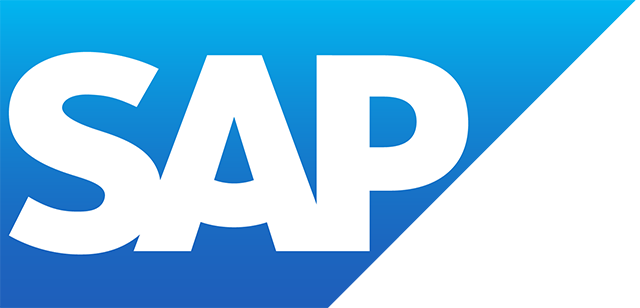SAP POS
Filter By
Browse By
- SAP Analytics and AI
- SAP Application Development and Integration
- All SAP Application Development and Integration
- SAP ABAP
- SAP ABAP Development Tools
- SAP ABAP Test Cockpit
- SAP API Management
- SAP BAPI
- SAP Basis
- SAP BRF
- SAP Business Application Studio
- SAP CMS
- SAP Design Studio
- SAP Development Tools
- SAP DevOps
- SAP EAI
- SAP EDI
- SAP Extension Suite
- SAP Fiori
- SAP Fiori Elements
- SAP Integration Suite
- SAP Low Code Application Development
- SAP Low Code Automation
- SAP Netweaver
- SAP Release Management
- SAP UI5
- SAP Web Application Server
- SAP Web IDE
- SAP Business Process Management
- SAP Center of Excellence
- SAP CIO
- SAP Customer Experience
- SAP Data and Data Management
- All SAP Data and Data Management
- SAP BW
- SAP BW/4HANA
- SAP Crystal Reports
- SAP Data Archiving
- SAP Data Center
- SAP Data Governance
- SAP Data Integration
- SAP Data Migration
- SAP Data Quality
- SAP Data Services
- SAP Data Strategy
- SAP Data Visualization
- SAP Data Warehouse Cloud
- SAP DMS
- SAP Document Control
- SAP EIM
- SAP ETL
- SAP ETL Tools
- SAP HANA
- SAP HANA Administration
- SAP HANA Deployment Infrastructure
- SAP HANA Studio
- SAP Master Data
- SAP Master Data Governance
- SAP MDM
- SAP Enterprise Architect
- SAP Enterprise Asset Management
- SAP ERP
- SAP Finance
- All SAP Finance
- SAP Accounting
- SAP AR AP
- SAP Asset Accounting
- SAP Billing Systems
- SAP BPC
- SAP BRIM
- SAP Cash Management
- SAP Central Finance
- SAP Controlling
- SAP COPA
- SAP Cost Center Accounting
- SAP Currency Risk
- SAP e-invoicing
- SAP FICO
- SAP Finance Automation
- SAP Advanced Financial Closing
- SAP Financial Consolidation
- SAP Financial Planning
- SAP FX Risk
- SAP General Ledger
- SAP Global Tax Management
- SAP Hyperion
- SAP Order to Cash
- SAP Payment Processing
- SAP Profitability Analysis
- SAP Rebate Management
- SAP S/4HANA Finance
- SAP SWIFT Compliance
- SAP Treasury Management
- SAP Universal Journal
- SAP Governance Risk and Compliance
- SAP Human Capital Management
- SAP Intelligent Technologies
- SAP Platform and Technology
- All SAP Platform and Technology
- SAP Business Technology Platform
- SAP Cloud
- SAP Cloud Connector
- SAP Cloud Integration Platform
- SAP Cloud Migration
- SAP Cloud Platform
- SAP Cloud Providers
- SAP Cloud Strategy
- SAP Digital Signature
- SAP Container Platform
- SAP HANA Enterprise Cloud
- SAP Digital Asset Management
- SAP Smart Forms
- SAP HEC
- SAP Digital Integration Hub
- SAP Hyperscalers
- SAP Infrastructure
- SAP Messaging
- SAP Quality and Testing
- SAP Security
- SAP Spend Management
- SAP Supply Chain Management
- All SAP Supply Chain Management
- SAP APO
- SAP Asset Management
- SAP Business Network
- SAP Digital Manufacturing Cloud
- SAP Digital Twin
- SAP EWM
- SAP IBP
- SAP Inventory Management
- SAP Label Printing
- SAP Logistics
- SAP Manufacturing
- SAP Manufacturing Automation
- SAP MES
- SAP MII
- SAP MM
- SAP MRO
- SAP MRP
- SAP Order Management
- SAP Plant Maintenance
- SAP PLM
- SAP Production Planning
- SAP S&OP
- SAP SD
- SAP SPM
- SAP Supply Chain Planning
- SAP Track and Trace
- SAP Transportation Management
- SAP System Administration
What Is Point of Sale?
Point of Sale (POS) represents the customer payment transaction for a brick and mortar or online retailer. As part of the POS, retailers rely on hardware and software to complete the transaction and process the payment.
POS: More than a Transaction
While the POS may appear simply as a transactional activity, it has implications for customer experience and profit for the retailer. Customers want and expect a checkout process that is quick, hassle-free, and easy to navigate.
What Is Point of Sale?
Point of Sale (POS) represents the customer payment transaction for a brick and mortar or online retailer. As part of the POS, retailers rely on hardware and software to complete the transaction and process the payment.
POS: More than a Transaction
While the POS may appear simply as a transactional activity, it has implications for customer experience and profit for the retailer. Customers want and expect a checkout process that is quick, hassle-free, and easy to navigate.
The POS is also critical for understanding customer preferences in terms of product selection and variety. Retailers gain valuable analytical insight into which products are selling, at what time of day, and in what quantity. This can provide better decision-making for the marketing and sales teams.
Lastly, integration between the POS, inventory management, and operational systems is critical for maintaining supply and demand balance and identifying potential revenue opportunities. Replenishment is essential for retailers to ensure the product is on the shelf where and when customers need it. Data from the POS should also be shared with suppliers to collaborate on product promotions and new product introductions.
SAP Customer Checkout Application
SAP’s point of sale solution is SAP Customer Checkout. According to SAP, the following are key POS capabilities of the application:
- Manage sales, returns, payments, coupons, and gift cards with a central POS system
- Access real-time reports, control sales and financial results, and extend and scale the application with flexibility
- Integrate with SAP S/4HANA or other ERP systems, or use as a stand-alone application
Key Consideration for SAPinsiders
- Case Study: AGRAVIS Transforms Its POS System for the Future. In this SAP case study, German agricultural trading company AGRAVIS needed to replace its legacy POS system to meet new cash register regulations and future POS transaction requirements. The company wanted a solution that integrated with its current software landscape, but also created a single source of truth of real-time sales and inventory data. AGRAVIS also required a solution that enabled capabilities for future omnichannel retailing. It chose the SAP Customer Checkout application with native SAP S/4HANA integration and linkage to existing legacy warehouse management systems.
A vendor in the point-of-sale space includes: Verbella.
365 results
-

ESS & MSS without the portal? SAP HCM advice from Jeremy Masters (Q&A transcript)
Reading time: 18 mins
Jeremy Masters of Worklogix recently took questions in one of our live online HR Forums to chat with you about ESS & MSS, SAP NetWeaver and preview his upcoming ESS & MSS sessions at HR 2013. Topics covered in this Forum include OADP, Launchpad, migration challenges, HR Renewal, running on NWBC, delegation capabilities, key...…
-

 Premium
Premium
How to Determine the Change Advisory Board Based on the SAP Component
Reading time: 8 mins
ManagerLearn how to configure the Solution Manager system to automatically determine the Change Advisory Board (CAB) whenever a new change request is posted in SAP Solution Manager based on the particular SAP component you are using, without any development. Step through the configuration necessary for automatic determination of the CAB, which is a group of...…
-

 Premium
Premium
Achieve Balanced Reporting by Automating Document Splitting in the New G/L
Reading time: 113 mins
SAPexperts Financials See the rules, steps, transactions, and method for document splitting. Then follow seven steps to configure it in your system. Key Concept The splitting method is the main key to activate document splitting in the new G/L, including splitting rules, business transactions, business transaction variants, and more. It is a component of active...…
-
-

 Premium
Premium
Capture the Value of Stock in Transit Using a New Business Function in Enhancement Package 5
Reading time: 15 mins
The classic sales process is a three-step procedure: create a sales order, create a delivery with reference to the sales order, and invoice for the delivered goods. Handling the potential time gap between the goods issue and the invoice has long been an issue for organizations trying to keep their financial accounts and Profitability Analysis...…
-

 Premium
Premium
Use SAP’s Enhanced BKPF Table for VAT Liability-Based Reporting
Reading time: 8 mins
Learn how to prepare reports based on value-added tax (VAT) liability dates to comply with European legal requirements. Key Concept In the standard SAP system the value-added tax (VAT) reporting is based on the posting date. By using the document date as a selection criterion, you can report on a document date. However, for some...…
-

 Premium
Premium
How to Navigate HR Data for CRM Team Members
Reading time: 12 mins
/HRUnderstand and quickly fix integration issues between SAP ERP HCM and SAP CRM systems, without having to rely on the HR team. Also learn the basics of SAP ERP HCM and Application Link Enabling (ALE) distribution of organizational data and business partner data from SAP ERP to an SAP CRM system. Key Concept SAP CRM...…
-

 Premium
Premium
Get a Better View of Your Sales Team with Territory Management
Reading time: 28 mins
Learn how you can use Territory Management to organize your sales force into groups, such as for products or geographical location. Setting up Territory Management involves a five-part process — see what steps you need to follow in each part to use Territory Management. Key Concept Territory Management, available with SAP CRM 4.0 and later,...…
-
-

 Premium
Premium
Capture Costs Correctly and Ensure Follow-On Data Integrity
Reading time: 13 mins
Understand the limitations of SAP validation and substitution functionality to ensure correct data capture and learn how to complement them using proactive formula builder functionality in a Business Add-In and a periodic reactive method of report automation. Key Concept Various business transactions feed data into the SAP system. Ensuring data quality results in more meaningful...…
-

 Premium
Premium
Make SAP General Ledger Migration Cockpit More Flexible by Adding Your Own Activities
Reading time: 8 mins
Fine-tune the migration cockpit to include your own activities in addition to standard ones so that you can see all the steps in one central place. Key Concept The migration cockpit helps you perform the tasks for migration to the SAP General Ledger. It is a step-by-step guide with all the required steps and the...…
-

 Premium
Premium
Maintain Data Integrity by Implementing Profit Center Planning in the New General Ledger
Reading time: 8 mins
Find out how to implement profit center planning in the new General Ledger and how to transfer planning data from Cost Center Accounting and Profitability Analysis to profit centers. Key Concept For SAP ERP 5.0 and 6.0, SAP integrated Profit Center Accounting into the new General Ledger (new G/L), so the profit center planning functionality...…
Become a Member
Unlimited access to thousands of resources for SAP-specific expertise that can only be found here.
Become a Partner
Access exclusive SAP insights, expert marketing strategies, and high-value services including research reports, webinars, and buyers' guides, all designed to boost your campaign ROI by up to 50% within the SAP ecosystem.
Upcoming Events
Related Vendors
Your request has been successfully sent


